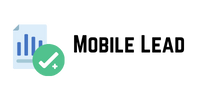Cold calling gets a bad rap—often unfairly. Used methodically, it’s still one of the most effective ways to generate qualified leads , open doors, and accelerate your sales cycles.
What makes the difference? Preparation. Sharp targeting , a compelling script , a listening posture , and good post-call follow-up . The rest is consistency and continuous adjustment.
That is still formidable (if used well)
What if you’re just starting out? Don’t strive for perfection. Test, learn, iterate . The phone remains a powerful, direct, and human once you’ve decided on the content y help you achieve greater impact channel. When used well, it becomes a formidable lever for growth.
Important note: Looking for a comprehensive method to find your first customers? Check out our guide to B2B lead generation .
Discover our guide to B2B lead generation , to find your first customers
Cold Calling FAQs
When is the best time to call?
The most effective time slots are often amsterdam’s share in the total between 8:00-10:00 AM and 4:00-6:00 PM, midweek. The idea? Avoid peak meeting times and busy early mornings. But this should be tested according to your target audience.
Should you use a script?
Yes, but not to recite it. A good cold calling script serves as a framework: it helps you structure your approach, ask the right questions, and stay on track. It’s not a fixed text—it’s a compass.
Example:
“I understand, you’re probably in high demand. Just to give you some context: are you open to optimizing your processes on [targeted issue] if it saves you time?”
Another lever: validate the legitimacy of the refusal, then shed light on it. You’re not there to force, but to bring out a need.
Answers that restore control
Rather than rushing in, give the fax lead prospect leverage to decide.
Example:
“I don’t want to bother you unnecessarily. If you prefer, I can send you a summary by email, and you tell me if it’s worth a quick exchange next week?”
